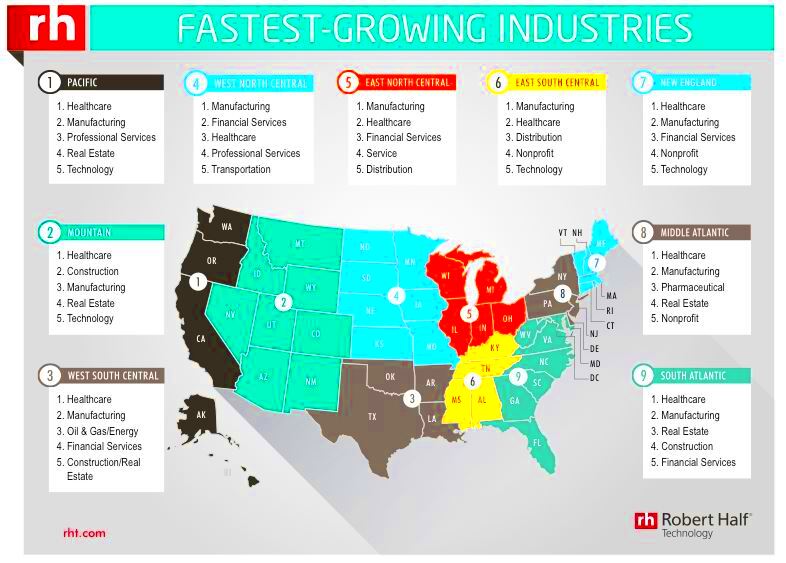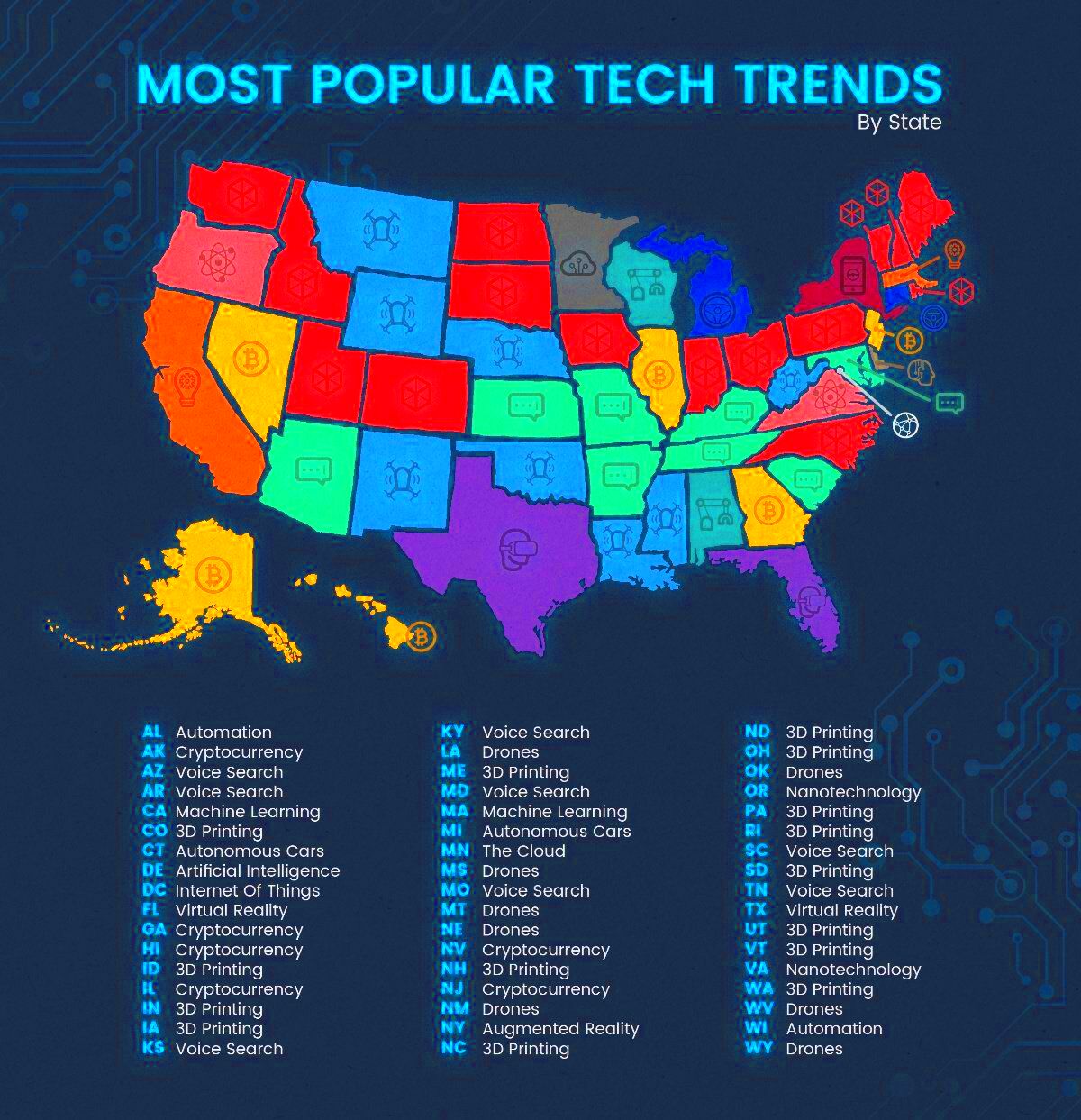Overview of the Technology Landscape

There are numerous fields that make up the significant and assorted
technology environment in the USA. Every one of them is initiation of improvements for daily life as well as operation of enterprises. Below is an outline of some prominent sectors:
- Software Development: Focused on creating applications for various platforms.
- Information Technology Services: Encompasses consulting and support services.
- Telecommunications: Involves communication services and infrastructure.
- Biotechnology: Merges technology with biological systems for healthcare innovations.
Furthermore, we will look into more than these that are just being expanded rather those that will be key to future growth regarding areas including artificial intelligence (AI) and machine learning; cybersecurity; cloud computing; health
technology; and technologies for remote work. In today’s fast-paced setting, each of these sectors faces distinct challenges and possibilities hence their significance.
Artificial Intelligence and Machine Learning

At the cutting edge of
technology are artificial intelligence (AI) and machine learning (ML). Through these technologies, machines are able to learn on their own from data and make decisions which cause these technologies to revolutionize multiple industries.Artificial Intelligence and Machine Learning are changing many aspects of our lives in some ways, such as the following:
- Automation of Tasks: Routine tasks can be automated, freeing up human resources for more complex issues.
- Enhanced Data Analysis: AI algorithms can analyze vast amounts of data quickly, leading to better insights.
- Personalization: Businesses use AI to tailor services and products to individual preferences, enhancing customer satisfaction.
The advantages of incorporating artificial intelligence and machine learning into business models are obvious:
Cybersecurity Trends and Importance
In today’s digital world, cybersecurity is more important than ever. With the increasing number of cyber threats, businesses and individuals must prioritize protecting their information. Cybersecurity trends are evolving rapidly to keep up with these threats, making it crucial for everyone to stay informed.Here are some key trends shaping the cybersecurity landscape:
- Zero Trust Security: This approach assumes that threats can exist both inside and outside the network, requiring strict verification for every user and device.
- AI-Powered Security: Artificial intelligence is being used to predict and respond to cyber threats more effectively, helping organizations stay one step ahead.
- Cloud Security: As more businesses move to the cloud, securing cloud environments is essential to protect sensitive data.
- Remote Work Security: With many employees working from home, companies are investing in tools to ensure secure remote access to their networks.
Understanding these trends is crucial for businesses looking to protect themselves. Here’s a quick look at why cybersecurity is so important:
| Reason | Importance |
|---|
| Data Protection | Safeguards sensitive information from breaches and leaks. |
| Compliance | Helps businesses adhere to regulations, avoiding legal penalties. |
| Reputation Management | Maintaining trust with customers and partners is essential for long-term success. |
In summary, staying ahead of cybersecurity trends is vital for protecting your business and personal information in an increasingly complex digital landscape.
Remote Work Technologies
Remote work technologies have transformed how we approach our jobs. With the rise of remote work, businesses have embraced various tools that enhance communication, collaboration, and productivity. These technologies are essential for teams spread across different locations, ensuring that work continues smoothly and efficiently.Here are some popular remote work technologies that have become staples in modern workplaces:
- Video Conferencing Tools: Platforms like Zoom, Microsoft Teams, and Google Meet allow for face-to-face meetings, bridging the gap between remote workers.
- Project Management Software: Tools such as Asana, Trello, and Monday.com help teams organize tasks, track progress, and meet deadlines.
- Cloud Storage Solutions: Services like Google Drive and Dropbox enable easy file sharing and collaboration, making it simple to access important documents from anywhere.
- Time Management Applications: Tools like Toggl and Clockify help employees track their time, ensuring that they remain productive while working remotely.
The benefits of utilizing these technologies are significant:
| Benefit | Description |
|---|
| Flexibility | Allows employees to work from anywhere, providing a better work-life balance. |
| Increased Productivity | Tools streamline workflows, leading to higher efficiency and output. |
| Cost Savings | Reduces overhead costs for businesses by minimizing the need for physical office space. |
As remote work continues to grow, investing in the right technologies will be crucial for maintaining a productive workforce.
Future Outlook for Technology Sectors
The future of
technology sectors is bright, with innovations constantly reshaping our world. As we move forward, several trends and advancements are expected to influence various industries profoundly.Here are some key areas to watch in the coming years:
- Artificial Intelligence: AI will continue to advance, driving automation and smarter decision-making across sectors.
- Internet of Things (IoT): The interconnectedness of devices will enhance data collection and analysis, leading to more efficient operations.
- 5G Technology: Faster internet speeds will enable new applications and enhance existing technologies, such as augmented reality and virtual reality.
- Sustainable Technology: Focus on environmentally friendly solutions will rise, pushing industries to innovate while minimizing their carbon footprint.
The impact of these trends can be significant:
| Trend | Potential Impact |
|---|
| AI Integration | Revolutionizes industries by automating processes and improving efficiency. |
| Enhanced Connectivity | IoT and 5G will create smarter cities and improve everyday life. |
| Focus on Sustainability | Encourages businesses to adopt green practices, benefiting both the environment and their brand image. |
As these sectors evolve, staying informed about emerging technologies will be essential for individuals and businesses alike.
Frequently Asked Questions
As we explore the fast-growing
technology sectors, you might have some questions. Here are some frequently asked questions to help clarify common concerns:
What is driving the growth of technology sectors?
- Several factors contribute, including the demand for efficiency, advancements in AI, and increased reliance on digital solutions.
How can businesses adapt to technological changes?
- Investing in training and adopting new tools can help businesses stay competitive in a rapidly changing landscape.
What role does cybersecurity play in technology growth?
- As technology advances, so do cyber threats. A strong cybersecurity strategy is essential for protecting sensitive data and maintaining trust.
Conclusion on Technology Growth in the USA
The technology growth in the USA is a dynamic and exciting phenomenon that impacts various sectors of our economy and daily lives. As we have explored, emerging technologies such as artificial intelligence, cybersecurity, cloud computing, and healthcare innovations are not just trends; they represent a fundamental shift in how we work and interact. - Understanding these developments is crucial for both individuals and businesses aiming to thrive in this fast-paced environment.With the rapid evolution of remote work technologies, the landscape of employment is changing. Organizations are adapting to new ways of collaboration, allowing employees to work flexibly and efficiently. Moreover, as we look ahead, the future of technology sectors appears promising, driven by a commitment to innovation, sustainability, and the need for enhanced connectivity.
 There are numerous fields that make up the significant and assorted technology environment in the USA. Every one of them is initiation of improvements for daily life as well as operation of enterprises. Below is an outline of some prominent sectors:
There are numerous fields that make up the significant and assorted technology environment in the USA. Every one of them is initiation of improvements for daily life as well as operation of enterprises. Below is an outline of some prominent sectors: At the cutting edge of technology are artificial intelligence (AI) and machine learning (ML). Through these technologies, machines are able to learn on their own from data and make decisions which cause these technologies to revolutionize multiple industries.Artificial Intelligence and Machine Learning are changing many aspects of our lives in some ways, such as the following:
At the cutting edge of technology are artificial intelligence (AI) and machine learning (ML). Through these technologies, machines are able to learn on their own from data and make decisions which cause these technologies to revolutionize multiple industries.Artificial Intelligence and Machine Learning are changing many aspects of our lives in some ways, such as the following:
 admin
admin








